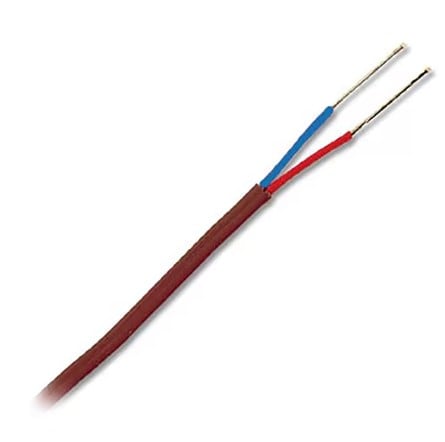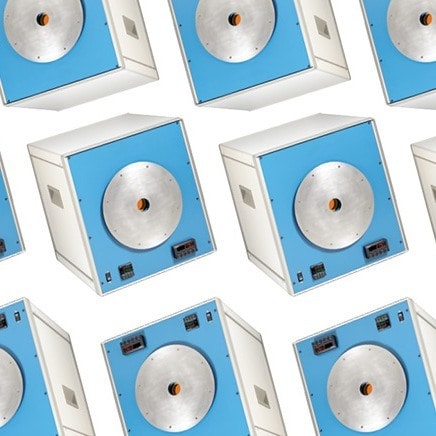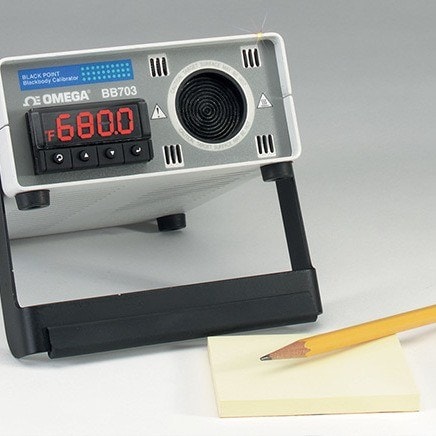 Using Thermocouple-Grade or Extension-Grade Wire helps ensure maximum temperature measurement accuracy - minimizing errors related to alloy composition or calibration mismatch.
Explore DwyerOmega's Selection
Using Thermocouple-Grade or Extension-Grade Wire helps ensure maximum temperature measurement accuracy - minimizing errors related to alloy composition or calibration mismatch.
Explore DwyerOmega's Selection
When using thermocouple sensors, the thermocouple wire used to carry the signal is just as important as the thermocouple sensor itself. Thermocouple wire is made from the same allow materials as the thermocouple sensor, and its primary role is to extend the thermocouple circuit from sensing junction (“hot junction”) to the measurement instrument (“cold junction”) without introducing additional errors. Thermocouple wire is made from the same allow materials as the thermocouple sensor, and its primary role is to extend the thermocouple circuit from sensing junction (“hot junction”) to the measurement instrument (“cold junction”) without introducing additional errors.
Why is Thermocouple Wire Important?
Thermocouples work by joining two dissimilar metal wires at one end (the hot junction), which produces a voltage as it experiences temperature changes. This voltage, measured at the cold junction, corresponds to the temperature at the sensing point. The specific combination of metals defines the thermocouple calibration type – such as Type K, J, T, or N. Each type has unique thermoelectric properties that affect accuracy, temperature range, and environmental suitability.
Unlike standard copper or general-purpose wire, the material characteristics of thermocouple wire must match precisely with the thermoelectric properties of the thermocouple sensor calibration type being used. This is the case because thermocouple wire relies on a predictable voltage change between the two metals to correlate back to a temperature measurement. Matching characteristics precisely ensures the integrity of temperature measurements across the entire system, as any variation in the wire material can lead to errors in the temperature measurement.
Comparing (Some) Thermocouple Wire Types
| ANSI Code | IEC Code | Maximum Useful Temperature Range: Thermocouple Grade/Extension Grade | Standard Limits of Error (Above 32 °F/ 0 °C) | Special Limits of Error (Above 32 °F/ 0 °C) | Alloy Combination: + Lead | Alloy Combination: - Lead | ||
|---|---|---|---|---|---|---|---|---|
| J | J | 2 to 1382 °F (0 to 750 °C) / 32 to 392 °C (0 to 200 °C) | Greater of 4.0 °F or 0.75 % (2.2 °C or 0.75 %) | Greater of 2.0 °F or 0.4 % (1.1 °C or 0.4 %) | IRON, Fe (magnetic) | CONSTANTAN COPPER-NICKEL Cu-Ni | Buy Now | |
| K | K | -328 to 2282 °F (-200 to 1250 °C) / 32 to 392 °F (0 to 200 °C | Greater of 4.0 °F or 0.75 % (2.2 °C or 0.75 %) | Greater of 2.0 °F or 0.4 % (1.1 °C or 0.4 %) | CHROMEGA® NICKEL-CHROMIUM Ni-Cr | ALOMEGA® NICKEL-ALUMINUM Ni-Al (magnetic) | Buy Now | |
| T | T | -328 to 662 °F (-250 to 350 °C) / -76 to 212 °F (-60 to 100 °C | Greater of 1.8 °F or 0.75 % (1.0 °C or 0.75 %) | Greater of 1 °F or 0.4 % (0.5 °F or 0.4 %) | COPPER Cu | CONSTANTAN COPPER-NICKEL Cu-Ni | Buy Now | |
| E | E | -328 to 1652 °F (-200 to 900 °C) / 32 to 392 °F (0 to 200 °C) | Greater of 3 °F or 0.5 % (1.7 °C or 0.5 %) | Greater of 1.8 °F or 0.4 % (1.0 °C or 0.4 %) | CHROMEGA® NICKEL-CHROMIUM Ni-Cr | CONSTANTAN COPPER-NICKEL Cu-Ni | Buy Now | |
| N | N | -450 to 2372 °F (-270 to 1300 °C) / 32 to 392 °F (0 to 200 °C) | Greater of 4.0 °F or 0.75 % (2.2 °C or 0.75 %) | Greater of 2.0 °F or 0.4 % (1.1 °C or 0.75 %) | OMEGA-P® NICROSIL Ni-Cr-Si | OMEGA-N® NISIL Ni-Si-Mg | Buy Now |
See the Full Chart Here
Thermocouple Grade Wire vs Extension Grade Wire
Although both thermocouple-grade and extension-grade wires are used to transmit temperature signals, they differ significantly in material composition, accuracy, application, and temperature range.
Thermocouple-Grade Wire
Thermocouple-grade wire is designed for direct temperature measurement and is typically installed at the hot junction — the sensing point of the thermocouple.
-
Material Composition: Made from the exact thermoelectric alloys specified for a thermocouple type (e.g., nickel-chromium/nickel-aluminum for Type K).
High Accuracy: Maintains precise thermoelectric output across the wire’s entire temperature range.
High Temperature Performance: Can withstand extreme temperatures while maintaining calibration, often used in industrial furnaces or kilns.
Cost: More expensive due to its purity and calibration accuracy requirements.
Example Application: Type K thermocouple-grade wire operating at 1000°C inside a high-temperature furnace.
Extension-Grade Wire
Extension-grade wire is used to connect thermocouples to measuring instruments, such as temperature controllers, indicators, or data loggers. Unlike thermocouple-grade wire, it is not intended for direct temperature sensing.
-
Material Composition: Made from alloys with the same nominal (but not exact) composition as the thermocouple-grade wire—for example, a Type K extension wire uses alloys similar to Chromel and Alumel.
Accuracy: Lower thermoelectric accuracy and stability, acceptable only within limited temperature ranges.
Temperature Rating: Typically suitable for environments up to 200°C (392°F) — well below the sensing point’s temperature.
Cost: Less expensive due to relaxed manufacturing tolerances and material requirements.
Application Limitation: Should only be used in the cold junction region or in wiring runs outside the hot zone.
Extension wire is ideal for reducing installation costs in long cable runs, provided it stays within the temperature and accuracy limits defined by standards such as ANSI MC96.1 or IEC 60584-3.
| Feature | Thermocouple Grade | Extension Grade |
|---|---|---|
| Use Location | At Measurement Point | Between Probe & Device |
| Accuracy | High (Calibrated) | Lower (Less Precise) |
| Temperature Range | High (e.g., >1000 °C) | Low (~200 °C) |
| Cost | Higher | Lower |
| Alloy Composition | Exact Specifications | Close, But Looser Tolerances |
Special Limits of Error (SLE) Wire vs Standard Limits of Error Wire: What's the Difference?
When selecting thermocouple wire, it's important to consider the required level of measurement accuracy. One key distinction lies between Standard Limits of Error (Standard Grade) wire and Special Limits of Error (SLE) wire. Both use the same thermocouple calibration types, but SLE wire is manufactured with tighter accuracy specifications.
Standard Limits of Error (Standard Grade)
- The default accuray specification for thermocouple wire
- Suitable for general-purpose temperature measurements
- Offers a broader tolerance range, making it ideal for less demanding applications
- Example - Type K: ±2.2 °C or ±0.75 % of reading (whichever is greater)
Special Limits of Error
- A higher-grade version of thermocouple wire with stricter accuracy tolerances
- Recommended for precision-critical applications where greater accuracy is required
- Typically more expensive due to enhanced quality control during manufacturing
- Example - Type K: ±1.1 °C or ±0.4 % of reading (whichever is greater)
Insulation Types and Environmental Resistance
While thermocouple calibration type determines the temperature sensing characteristics, insulation type plays a critical role in protecting the wire and maintaining signal integrity. Choosing the appropriate insulation is essential, as it can limit the thermocouple’s maximum usable temperature and affect performance in challenging environments.
Thermocouple wire is available with a wide range of insulation materials, each selected based on environmental conditions such as:
- Operating temperature range
- Exposure to moisture, chemicals, or oils
- Mechanical wear or abrasion
- Installation environment (e.g., indoor, outdoor, or industrial)
The right insulation not only preserves the accuracy of the temperature reading but also extends the service life of the wire by shielding it from heat, chemical corrosion, and physical damage.
For demanding environments such as outdoor installations, high-vibration areas, or harsh industrial settings, consider dual-jacketed or armored thermocouple wires, which provide enhanced protection against mechanical stress and moisture intrusion.
| Insulation Code | Insulation - Overall | Insulation - Conductors | Temp Range; Insulation | Abrasion Resistance | Flexibility | Water Submersion | Resistance to Solvent | Resistance to Acid | Resistance to Base | Resistance to Flame | Resistance to Humidity |
|---|---|---|---|---|---|---|---|---|---|---|---|
| PP (Extension Grade EXPP) | Polyvinyl Chloride (PVC) | Polyvinyl Chloride (PVC) | -40 to 105 °C / -40 to 221 °F | Good | Excellent | Good | Fair | Good | Good | Good | Good |
| FF (Extension Grade EXFF) | FEP or Neoflon | FEP or Neoflon | -200 to 200 °C / -338 to 392 °F | Excellent | Good | Excellent | Excellent | Excellent | Excellent | Excellent | Excellent |
| TT (Extension Grade EXTT) | PFA or Neoflon | PFA or Neoflon | -267 to 260 °C / -450 to 500 °F | Excellent | Good | Excellent | Excellent | Excellent | Excellent | Excellent | Excellent |
| KK | Kapton | Kapton | -267 to 316 °C / -450 to 600 °F | Excellent | Good | Good | Good | Good | Good | Good | Excellent |
| TG | Glass Braid | PFA or Neoflon | -73 to 260 °C / -100 to 500 °F | Good | Good | Excellent | Excellent | Excellent | Excellent | Excellent | Excellent |
| Row 6 | -- | -- | -- | -- | -- | -- | -- | -- | -- | -- | -- |
| Row 7 | -- | -- | -- | -- | -- | -- | -- | -- | -- | -- | -- |
| Row 8 | -- | -- | -- | -- | -- | -- | -- | -- | -- | -- | -- |
| Row 9 | -- | -- | -- | -- | -- | -- | -- | -- | -- | -- | -- |
| Row 10 | -- | -- | -- | -- | -- | -- | -- | -- | -- | -- | -- |
| Row 11 | -- | -- | -- | -- | -- | -- | -- | -- | -- | -- | -- |
| Row 12 | -- | -- | -- | -- | -- | -- | -- | -- | -- | -- | -- |

